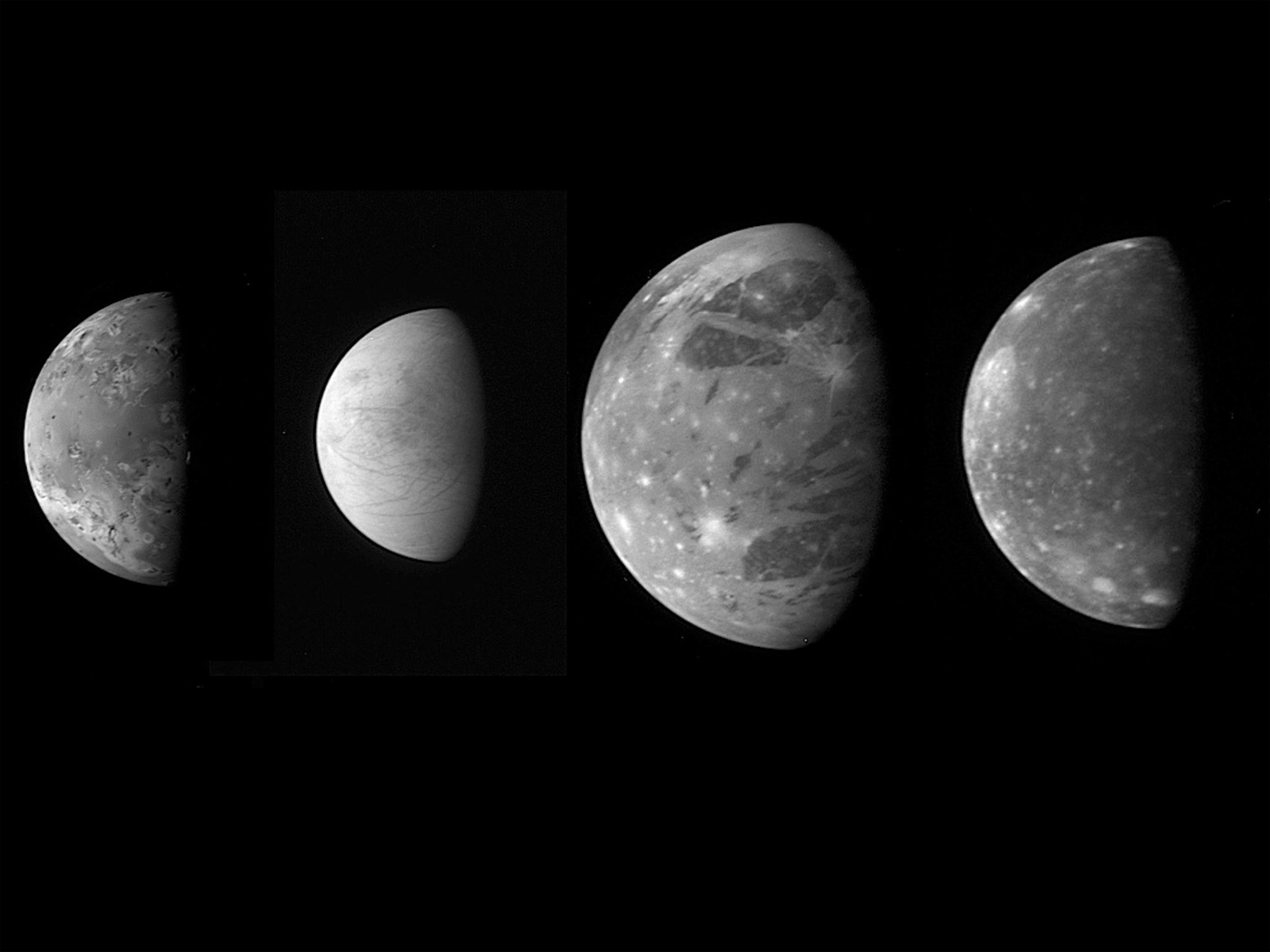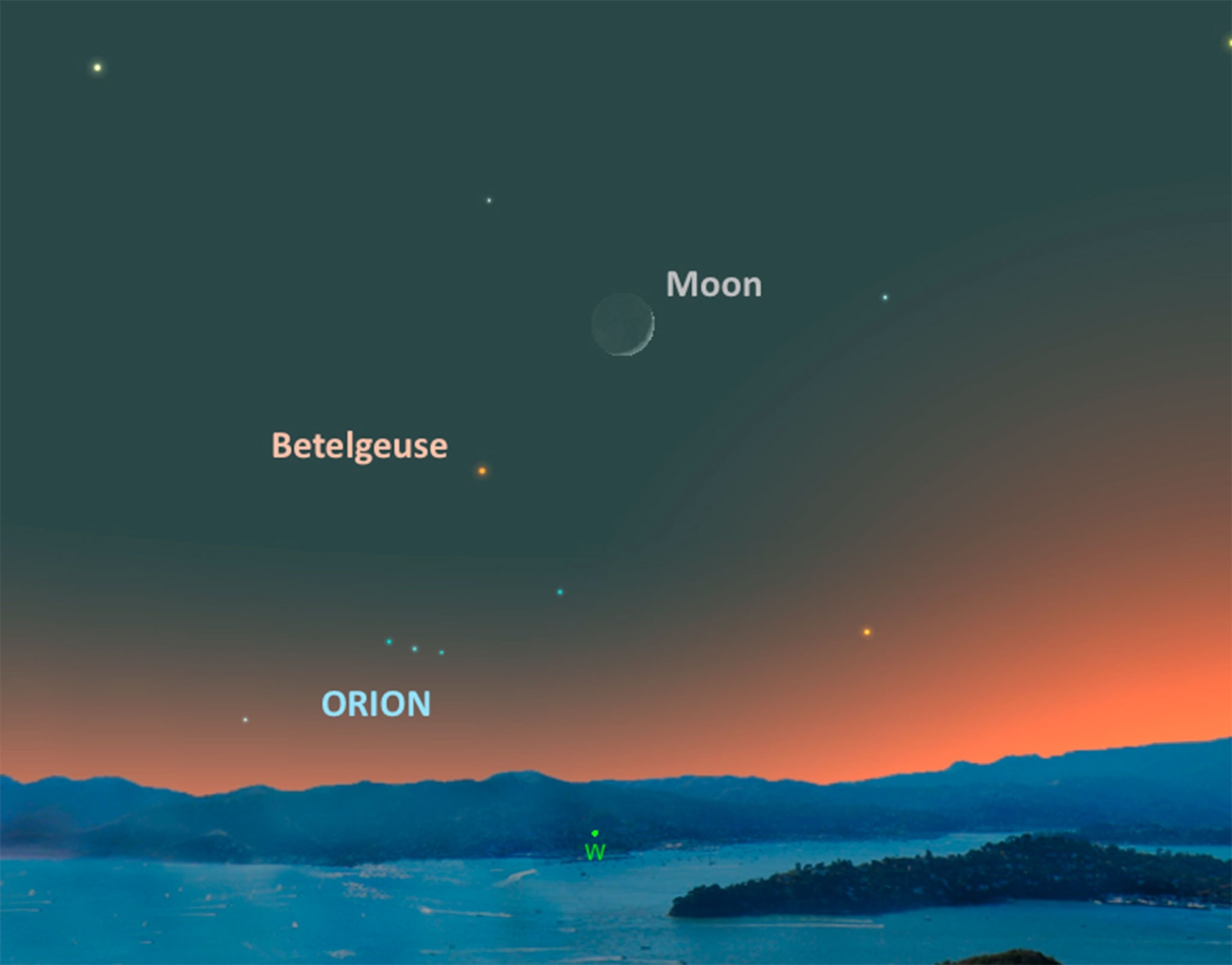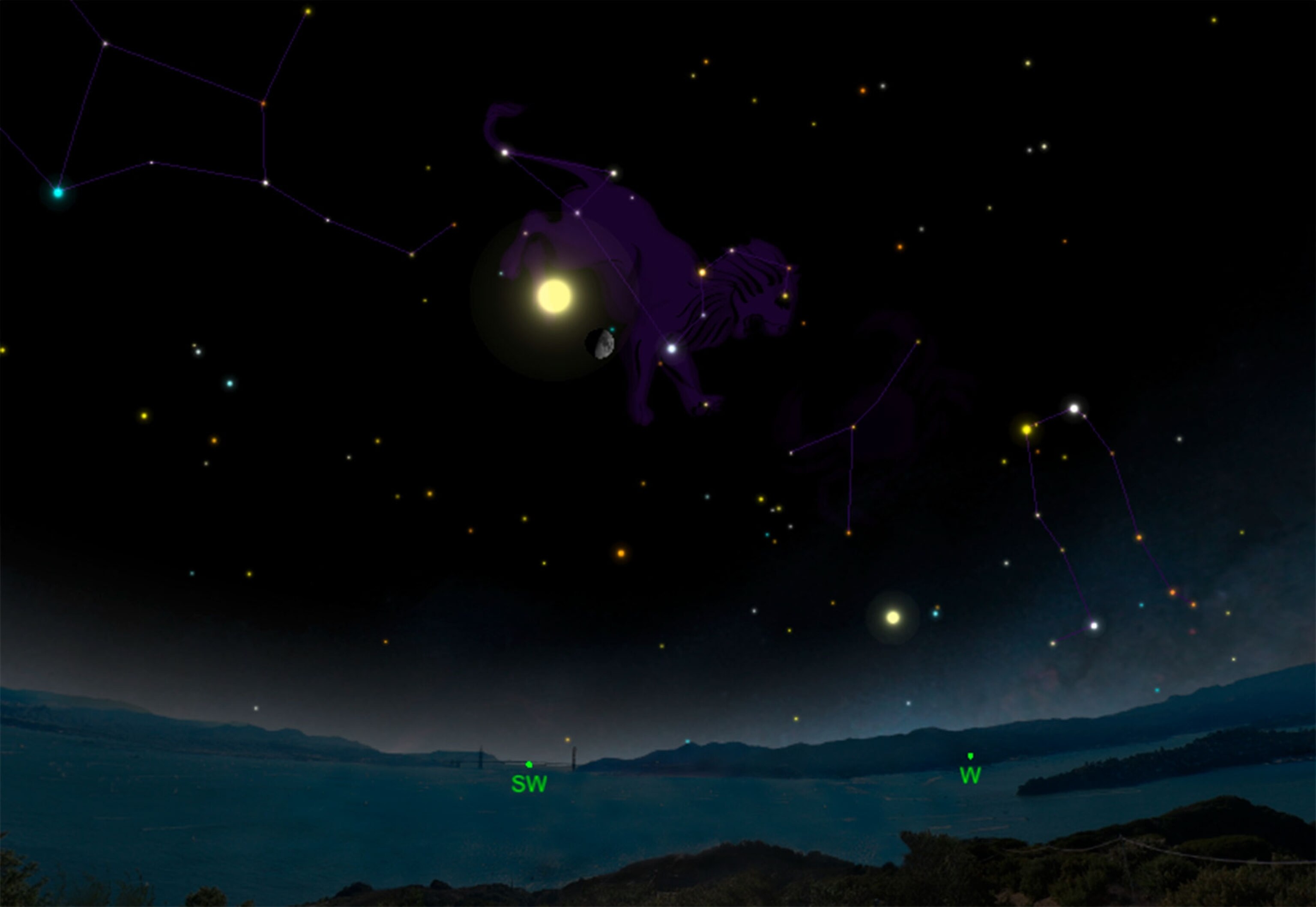
This Week’s Night Sky: Catch the Moon Cruising by Jupiter
You can also get a fleeting glimpse of the orange star Betelgeuse and a look at a fuzzy little comet.
Betelgeuse Bows Out. Just as the sun sets on May 9, look toward the western sky for the razor-thin crescent moon to point the way to the bright orange star Betelgeuse.

This red giant star some 642 light-years distant belongs to the great constellation Orion, the hunter, which dominates the winter season in the Northern Hemisphere. While just a few months ago, Orion’s brilliant set of stars shone high in the night skies, it now might be quite a challenge to make out the hunter’s distinctive form nestled in the glare of the sunset.

Jaunt to Jupiter. By May 14, look for the waxing gibbous moon to pay a short visit to the king of all planets, Jupiter. The pair will be even closer on Sunday night, separated by only five degrees, equal to the width of your middle three fingers held at arm’s length.
If you point your binoculars at this gas giant, you can easily see its four largest moons, first observed and recorded by famed astronomer Galileo back in 1609. And if you have a small telescope handy, you can see the planet’s beautiful atmospheric details, such as swirls and festoons of gas compounds that make up the upper cloud deck.

Comet Coming. As a great observing challenge this week, try hunting down the recently discovered comet C/2013 X1 (PANSTARRS), which is finally making its appearance in the early morning skies as it draws away from the sun.
Discovered back in 2013 by an automated survey telescope, this icy visitor now shines at about 7.5 magnitude, making it too faint for naked-eye viewing but readily available to binoculars under dark skies. This week the comet will be within the constellation Aquarius, the water-bearer—check out Astronomy.com for a detailed finder’s chart.
Because the comet will appear fairly low in the eastern sky for mid-northern latitude observers, it's best to find an observing spot with a clear, unobstructed view of the eastern horizon. Try comet chasing about an hour before local sunrise, so that the sky is dark enough but the comet is also sufficiently high.
Expect the comet to be about 15 degrees above the horizon at that time, equal to about the height of your fist held at arm’s length. As you scan the sky, look for a small fuzzy blob that will be easy to differentiate from a pinpoint star—that’s your target.





